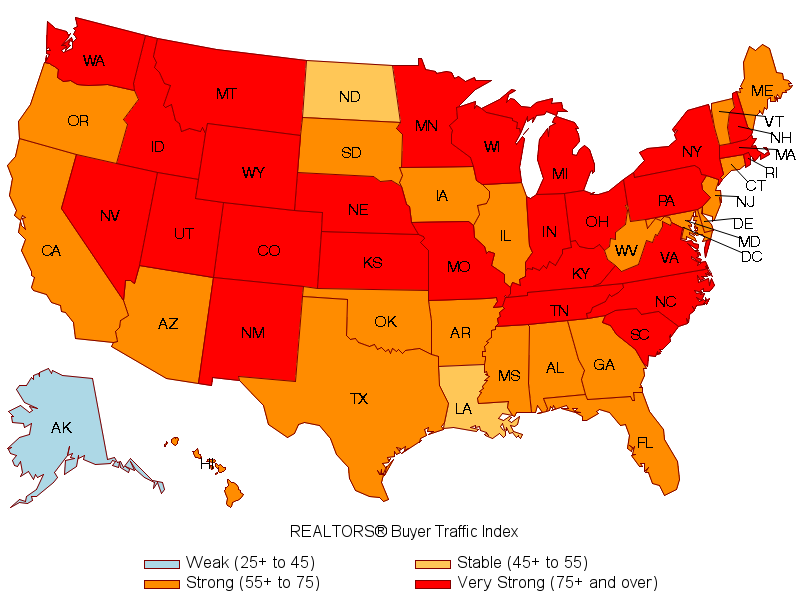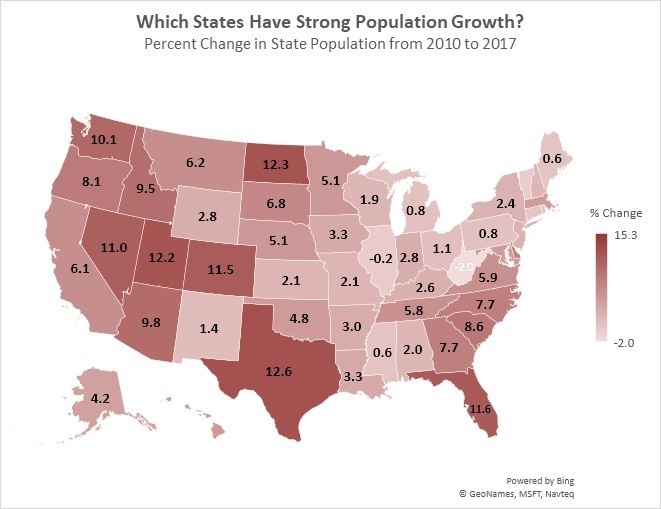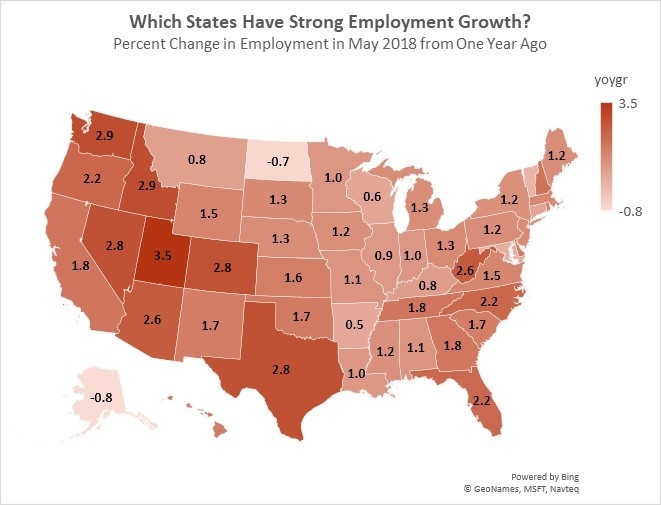In a monthly survey of REALTORS®, respondents are asked "Compared to the same month last year, how would you rate the past month's traffic in neighborhood(s) or area(s) where you make most of your sales?" Respondents rate buyer traffic as "Stronger" (100), "Stable" (50), or "Weaker" (0), and the responses are compiled into a diffusion index. An index greater than 50 means that more respondents reported "stronger" than "weaker" conditions.[1]
The chart below shows buyer traffic conditions in March–May 2018 compared to conditions one year ago, according to the May 2018 REALTORS® Confidence Index Survey. REALTORS® reported that buyer conditions were "stable" to "very strong" compared to conditions one year ago, except in Alaska. REALTORS® reported that demand was "very strong" in May 2018 compared to the same month last year in the District of Columbia and in 26 states, led by Wyoming, Idaho, Wisconsin, Rhode Island, Utah, New Hampshire, Ohio, Kansas, Tennessee, Minnesota, Nebraska, Michigan, Colorado, Indiana, Washington, South Carolina, and Massachusetts.

Housing demand is in part driven by population and employment growth. During 2010‒2017, the West and South region states had the fastest population growth, led by Texas (12.6%), North Dakota (12.3%), Utah (12.2%), Colorado (11.5%), Nevada (11.0%), and Washington (10.1%), Arizona (9.8%), Idaho (9.5%), and Oregon (8.1%).

The states in the West and South regions also had the strongest employment growth in May 2018 compared to one year ago. Nationally, employment rose 1.6 percent, but employment in these states rose above the national average, led by Utah (3.6%), Washington (2.9%), Idaho (2.9%), Colorado (2.8%), Arizona (2.8%), Texas (2.8%), Florida (2.2%), and West Virginia (2.6%).

Strong demand in these states has bolstered home prices, especially in California, which has 11 of the top 20 priciest metro areas in May 2018. Scroll down the interactive data table visualization below to check out the priciest metro areas in May 2018.
[1] In generating the indices, NAR uses data for the last three surveys to have close to 30 observations. Small states such as AK, ND, SD, MT, VT, WY, WV, DE, and D.C., may have fewer than 30 observations. For graphical purposes, index values from 25.01 to 45 are labeled "Weak," values of 45.01 to 55 are labeled "Stable," values of 55.01 to 75 are labeled "Strong," and values greater than 75 are labeled "Very Strong."








